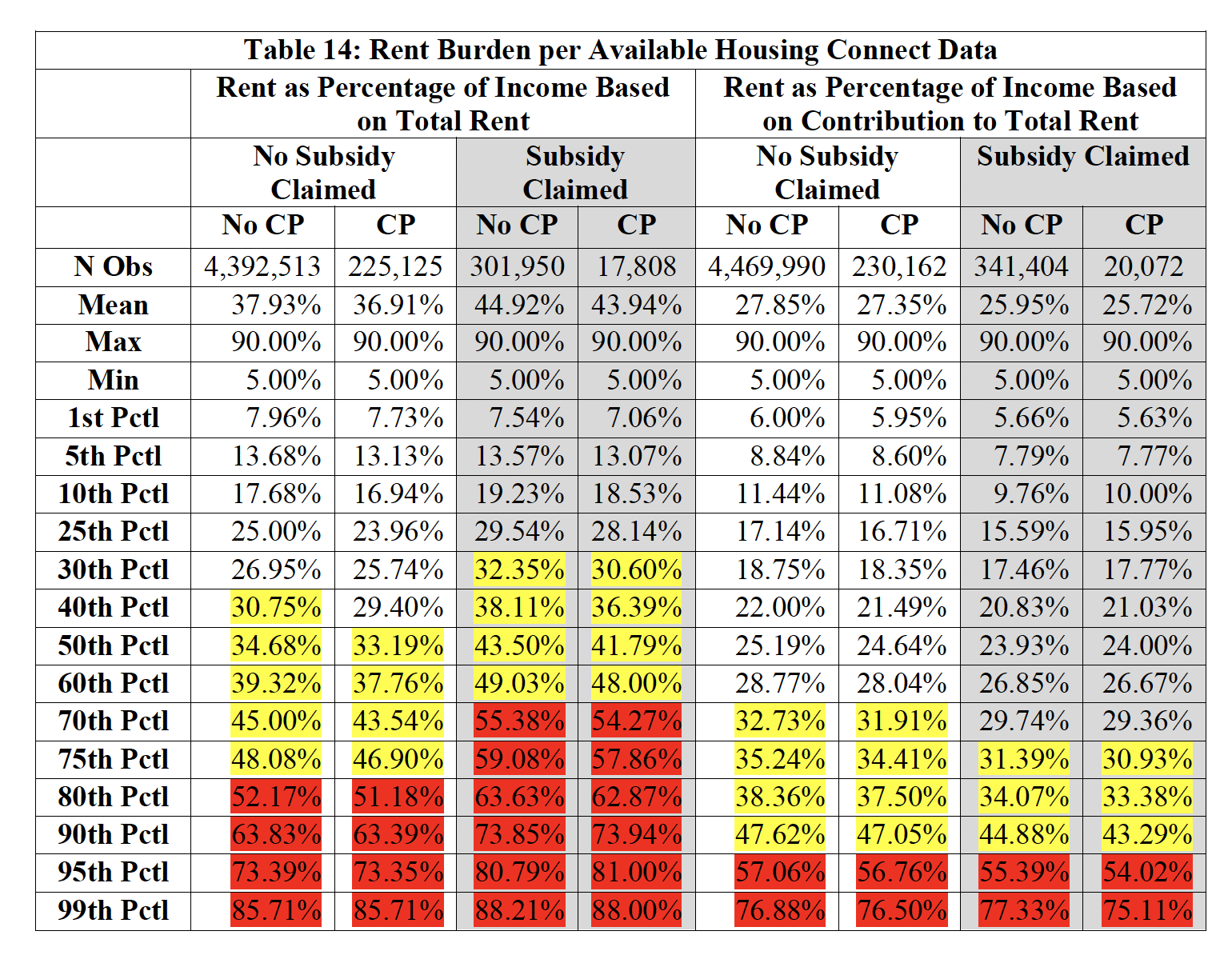Plaintiffs move for summary judgment against City in outsider-restriction case
Rent burden
From Professor Beveridge’s declaration: “Paying more than 30 percent of income is considered ‘rent burdened.’ Paying more than 50 percent of income on rent is considered “[severely] rent-burdened.” The table is easiest to read if one imagines that each application (in each of four categories, as split by CP and no CP) is arrayed from lowest rent-burden to highest rent-burden,and from lowest percentile to highest percentile. It is not, for example, until the 80th percentile of ‘rent as percentage of income based on total rent’ where no subsidy is claimed (the leftmost of the four pairings) that both CP beneficiary and non-beneficiary applicants begin to be [severely] rent-burdened (as shown in red).”
“For each of the four comparisons between CP beneficiary applications and non-beneficiary applications, the results show that, at each percentile, rent as a percentage of income is very similar. The percentile band at which applicants breach the percentage of income spent onrent to be designated as “rent burdened” – the first band highlighted in yellow – is identical as between CP beneficiary applications and non-beneficiary applications in the second through fourth comparisons, and virtually identical in the first. The percentile band at which applicants breach the percentage of income spent on rent to be “severely rent burdened”– the first band highlighted in red – is identical as between beneficiaries and non-beneficiaries in all four comparisons.”

“The disconnect or lack of fit between an argument that the policy is designed to deal with displacement and/or the fear of displacement, on the one hand, and what the data shows, on the other, is revealed even more clearly when comparing the number of applications from rentburdened non-CP-beneficiaries with the number of applications from rent-burdened CP beneficiaries. For example, in the portion of the table that shows rent as a percentage of income based on contribution to rent for those applications where no subsidy is claimed, “rent-burdened” (more than 30 percent) occurs at the 70th percentile. This translates to more than 1.3 million applications that came from rent-burdened or severely rent-burdened applicants who are nonbeneficiaries; by contrast, fewer than 70,000 applications came from rent-burdened or severely rent-burdened applicants who are CP beneficiaries. A significant disparity is present whichever of the four comparisons are used, and regardless of whether one looks at those who are rent-burdened or severely rent-burdened.”
